This article may contain links to products and services we use and recommend. We may receive compensation when you click on links to those products. For more information, see our Disclosure Policy.
Inscribed on the UNESCO World Heritage list in the same year as its larger cousin 70km up the coast, Kotor and its walled Old Town have long been hailed as a less crowded alternative to Dubrovnik. Several years ago, the New York Times jumped on the same bandwagon. But as we discovered, the quiet times are over, and mass tourism truly has arrived in the once tranquil, fish-rich Bay of Kotor. Don’t get us wrong: Kotor Bay is magical. And it certainly deserves more than a few hours on a bus trip (or a cruise ship stopover). If you want to experience Kotor Bay (largely) off the beaten path and without the tourist crowds, our article is for you.
Want to see more of Montenegro than just (the Bay of) Kotor? Check out our Montenegro guide and 14-day itinerary, which will take you to all our favourite spots—no car needed.
Are you planning a last-minute trip to Kotor?
Book your transportation to/from and around Kotor, keeping your carbon footprint in mind:
Find your perfect accommodation in Kotor with Booking.com. We recommend these centrally located options:
We use and recommend Airalo eSIMs for affordable, hassle-free internet access in 200+ destinations. Activate before you arrive and get online instantly.
Map of Accommodation, Points of Interest, Eateries and Transport
Below is a map of the recommended accommodations, points of interest, eateries, and transport terminals or stops mentioned in this article.
Before discussing the things to do in Kotor and our recommended itinerary, let’s start with some essential travel tips for Kotor.
When best to visit the Bay of Kotor
(Cruise ship) Day-trippers = Crowds
On our first morning in Kotor, we were woken up by a noise we imagined the sinking of the Titanic sounded like: metal screeching under pressure as a giant monster of a cruise ship pushed past our window. It was only 07:00, and the sun had barely popped over the mountains on the other side of Kotor Bay. Later that day, four big cruise ships had anchored in the bay (spilling thousands of day-trippers). Needless to say, on our first full day in Kotor, we didn’t go anywhere.
With around 600,000 cruise passengers visiting Kotor annually and countless more day-trippers from around the region, you want to time your visit right. If you have a choice, avoid the busy summer months, especially July and August, when many European countries have school holidays. But even earlier/later in the year, the Bay of Kotor can get very busy: the primary cruise ship season lasts from May to October.
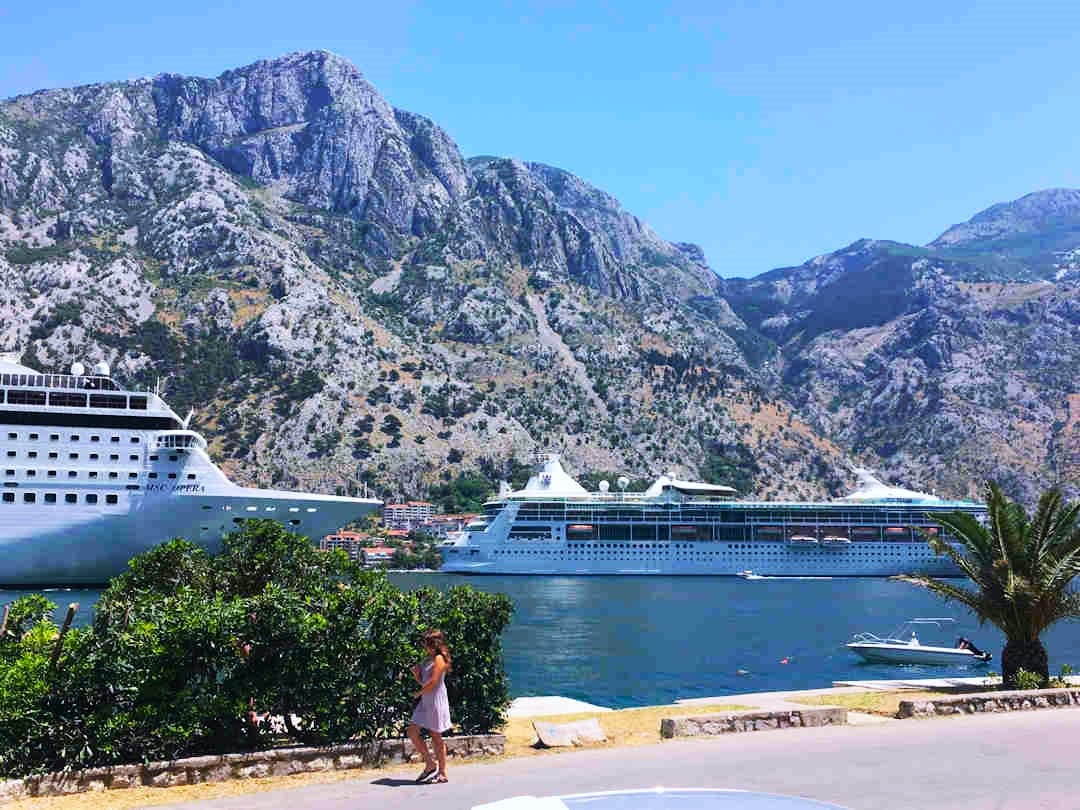
Avoid visiting Kotor when there are (two or more) cruise ships anchored in the Bay
How to avoid the crowds
Unsurprisingly, the quietest time is from November to April. Weatherwise, though, winter is not the best time to visit the Bay of Kotor: It’s cold, wet and often cloudy. May or October are the best times to visit Kotor when the temperatures are more pleasant. While it can still get busy during these months, you can reduce your crowd encounters by
- checking out the cruise ship schedule and avoiding days with (two or more) cruise ships in town;
- staying outside the Old Town – there are plenty of fantastic (and more affordable) accommodation options along the bay shore with good public transport links into Kotor;
- heading to key sites early in the day (and be over and done with your visit by the time the day-trippers arrive), and
- exploring sites that are a bit more off the beaten path – I’ll share a few ideas with you below.
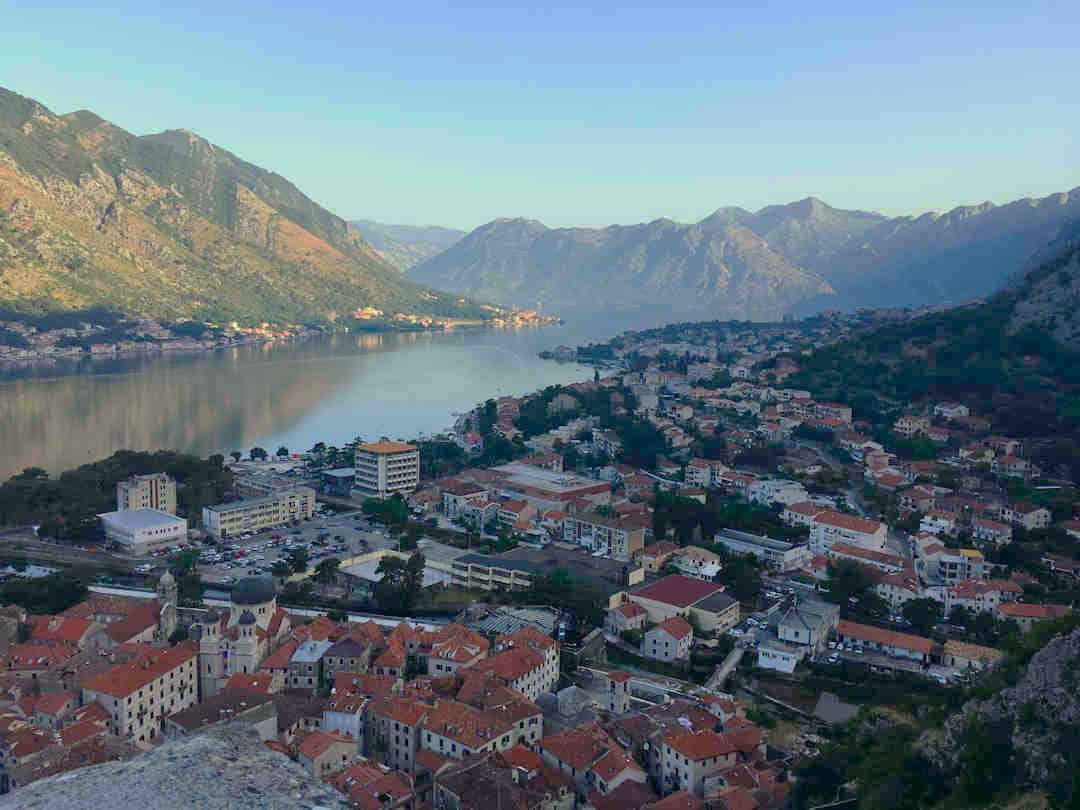
With pleasant temperatures, May and October are great months to visit Kotor, especially if you know how to manage the day-tripper crowds
How much time to spend in the Bay of Kotor
While you could spend much longer here, we’ve created our Kotor itinerary with three days in mind (plus a few extras if you’ve got the time). This gives you a good introduction to all the great things Kotor Bay offers while leaving you enough time to explore the rest of Montenegro.
How to get to Kotor (without a car)
The nearest airport is in Tivat [IATA: TIV | Official website | Google Maps location], with frequent flights between May and October from many European countries.
From Tivat Airport
The cheapest: Tivat’s Intercity Bus Terminal is a flat 1.5km/20-minute walk from the airport [Google Maps location]. Bus fares are about EUR3 per person (plus station and luggage fees). If you’re lucky, you may even be able to flag one down as you’re walking towards the bus terminal—just make sure it goes to Kotor. Buses to the Kotor Bus Terminal take about 20 minutes.
If your accommodation is along the shore opposite Kotor’s Old Town (Prčanj or Muo), you can take the Blue Line bus (look for the Tivat – Kamp via/preko Prčanj timetable). These local buses travel along Jadranska Magistrala (the road hugging the bay shore) and cost EUR1-2 (depending on where you get off).
The fastest: A taxi/private transfer between Tivat Airport and Kotor starts at EUR30 and takes around 15 minutes to Kotor Old Town, pending traffic. Avoid the taxi mafia outside the airport and book directly with Red Taxi Kotor.
Podgorica is another option [IATA Code: TGD | Official website | Google Maps location] – the airport is just south of the Montenegrin capital (and about 80km from Kotor).
From Podgorica Airport
The cheapest: To travel from Podgorica Airport to Kotor, you first have to make your way to Podgorica:
- The train to Podgorica (from Aerodrom train station, a flat 20-minute walk from the terminal—Google Maps location) takes about 10 minutes and costs a maximum of EUR2 per person. Check the train times (from Aerodrom to Podgorica) as trains are not frequent (often delayed).
- A taxi from the airport to Podgorica’s Central Bus Terminal costs EUR12 and takes about 15 minutes.
From Podgorica, there are frequent inter-city bus services to Kotor via Budva. These take about 2 hours and cost around EUR8-9 per person (plus fees).
The fastest: A taxi/private transfer from Podgorica Airport to Kotor takes around 1.5 hours and costs EUR85. Book yours in advance with Go Montenegro.
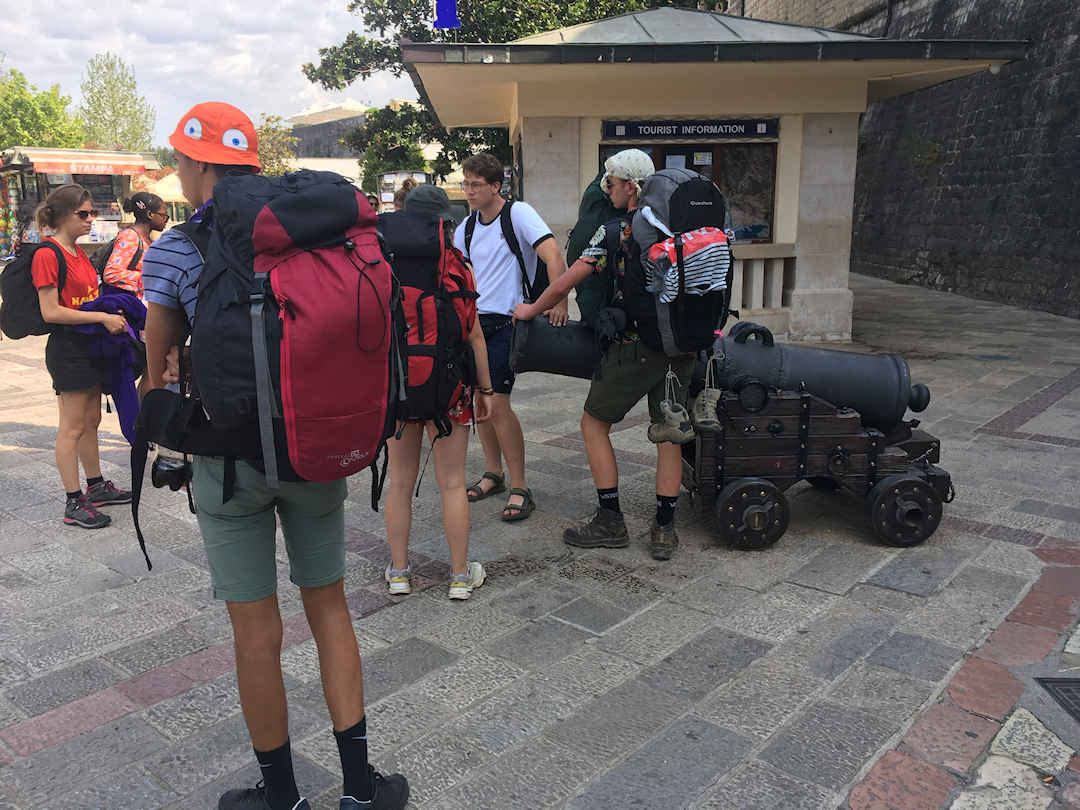
Budget travellers can travel to Kotor from the airports in Tivat or Podgorica by public transport
How to get around Kotor Bay (without your car)
Public Bus Network
Blue Line operates a public bus service connecting the villages and towns between
- Škaljari and Risan (along the eastern shore of the bay via Kotor Old Town, Dobrota and Perast) using the Novo Naselje Škaljari – Risan route;
- Dobrota and Tivat (past Kotor Old Town and along the western shore via Muo and Prčanj) using the Kamp – Tivat via/preko Prčanj route); and
- Tivat and Radovići or Krašići (both on the Luštica Peninsula).
You can find the timetables on the Blue Line website. Bus fares are only a few Euros, depending on your destination. You pay cash on the bus. Check MapsMe to find the bus stops (they are not on GoogleMaps, and there are no signs on the street, though waiting locals will be able to confirm you’re in the right spot).
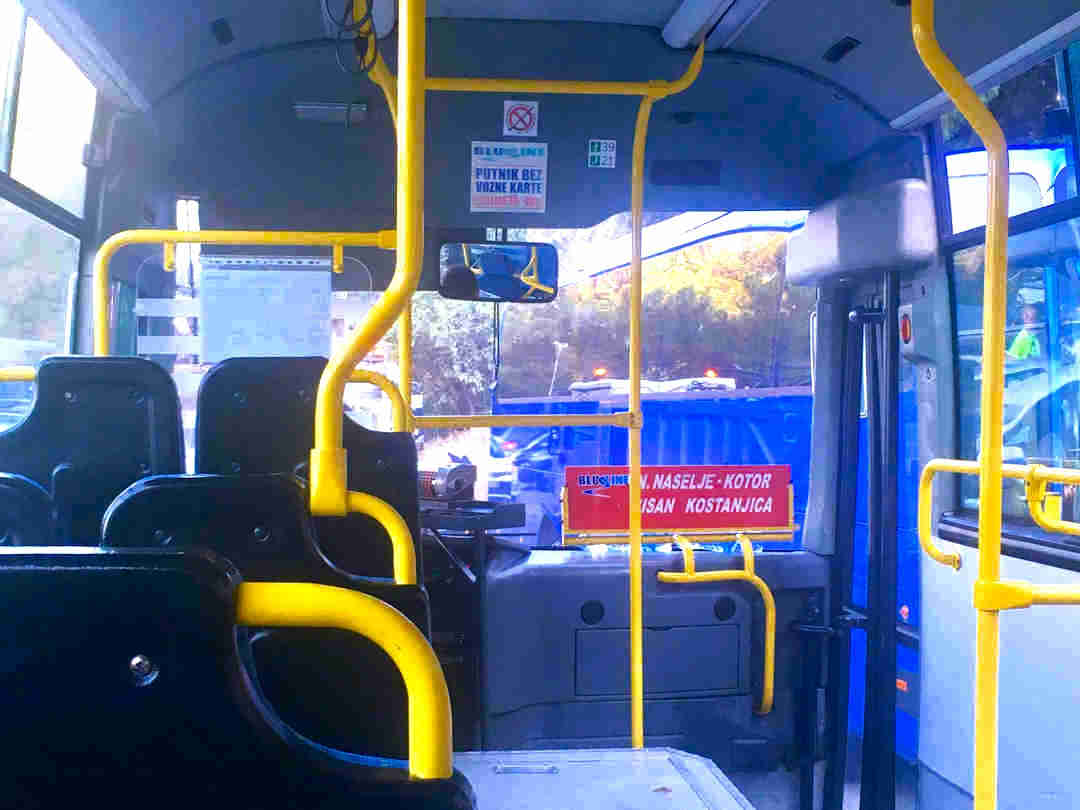
Blue Line buses connect the villages and towns along the Bay of Kotor
Bicycle
Another option to explore the Bay of Kotor is by bike. There are multiple bicycle rental places in Kotor and Dobrota (and even a dedicated bike lane for some of the way).
Taxis
Unlike some taxi companies from the airport, taxis along the bay shore are reasonably priced. Expect to pay EUR1-2 base price plus EUR1 per km travelled. Make sure the meter is on before you set off. Most taxi drivers prefer cash payment.
Having covered the logistics, let’s discuss what you came here for—our Kotor itinerary. This itinerary covers Kotor Old Town and the more expansive bay, as shown on our itinerary map above.
3-Day Best of Kotor Itinerary
Arrival Day – Take a sunset stroll
Take it easy today. Check in to your accommodation. Go for a stroll along the bay shore. Orientate yourself in your neighbourhood. Pinch yourself amid all this beauty.
Then, as the day-trippers head back to their buses and onto their ships, start your stroll around the Old Town and atop its city walls. Watch the colours change as the sun disappears behind the mountains on the other side.
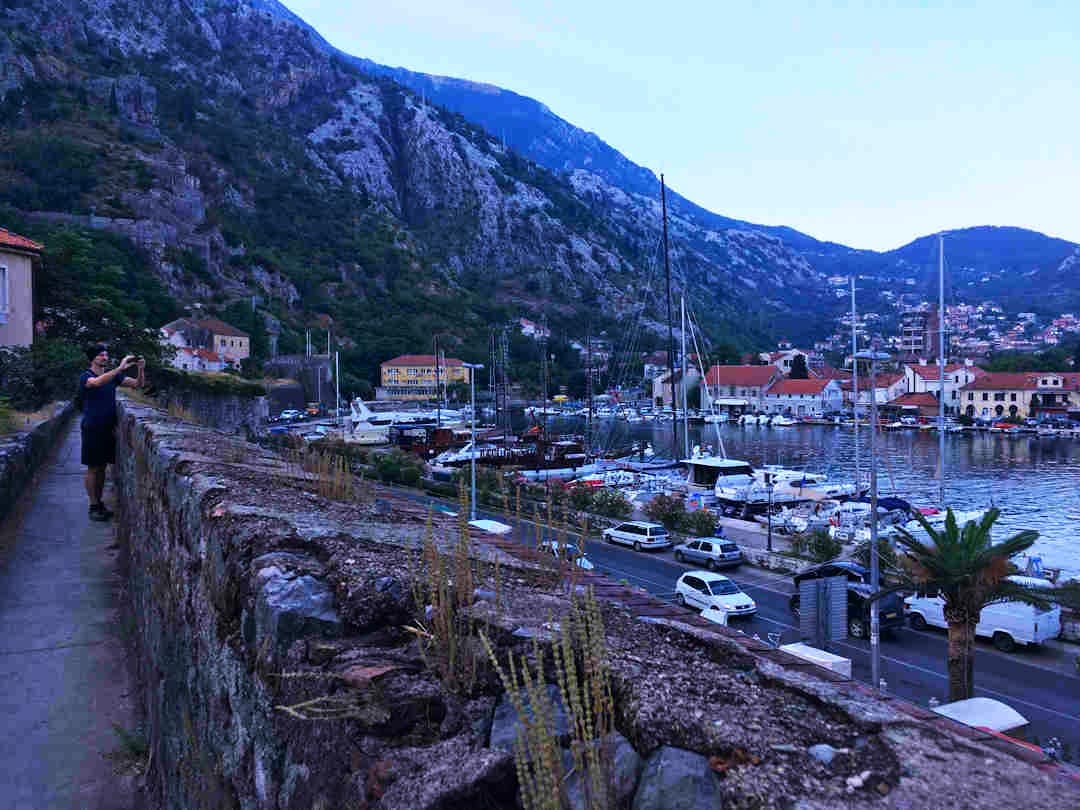
In Kotor, you can still walk along the Old Town Walls with no other soul in sight (if you time your visit right)
Day 2 – Explore Kotor
Hike the Ladder of Kotor
Start your second day by hiking the Ladder of Kotor [Google Maps location], a steep zigzag path that takes you up the mountain behind Kotor’s Old Town. Enjoy (almost) the same views as you’d get from San Giovanni’s Fortress but without the entry fee of EUR15 (with fewer people). There is even a family-run eatery, conveniently located halfway up the mountain [Google Maps location] – bring cash if you want to purchase refreshments.
A path leads from the little restaurant to St. Juraj Church, a small chapel next to Kotor Fortress. You can even enter the Fortress (via an opening in the walls) if you continue walking the path from the church. If you want to hike up via the Ladder and back down via the Fortress path (past the church of Our Lady of Remedy), you may be asked to pay the EUR15 entry fee upon exiting through the gate back into the Old Town. If you don’t want to risk it, walk the Ladder back down.
It’s a steep climb, so get up early. You don’t just want to avoid the crowds but also the sun’s full force. We started just before 7:00 (sunrise was 05:15 when we visited Kotor), and we reached the top just as the sun popped over the mountains.
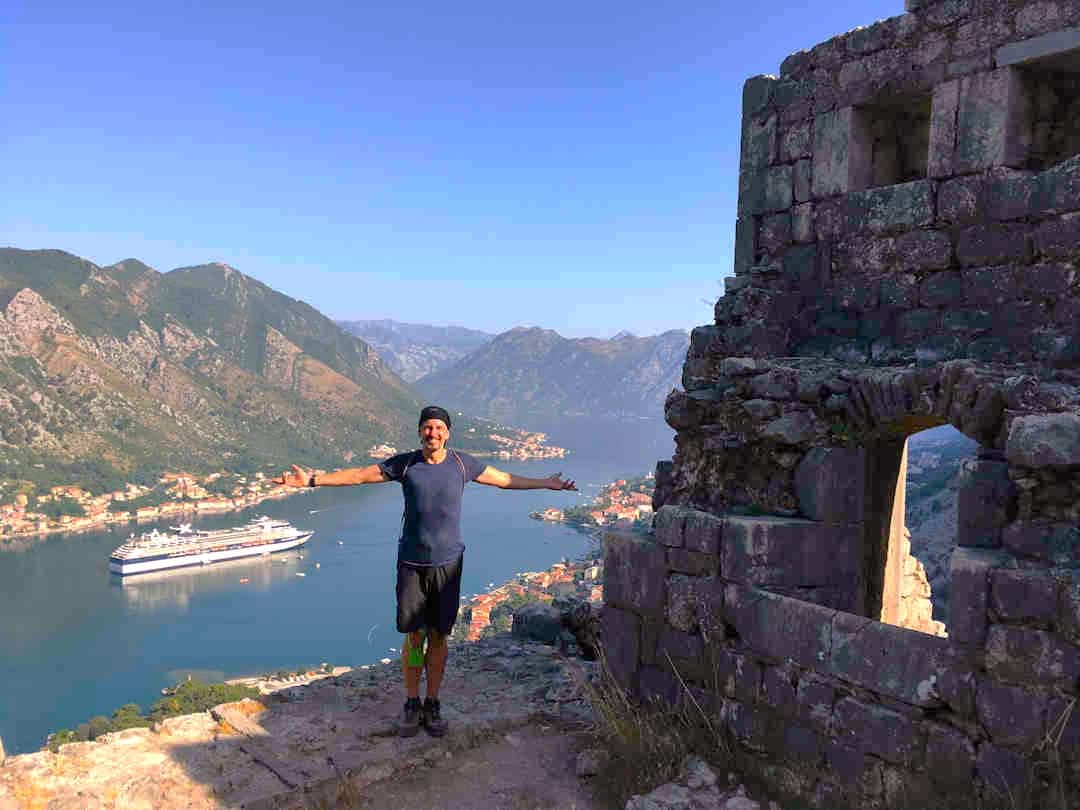
Hike the Ladder of Kotor (with or without the Fortress) early to avoid the day-tripper crowd and full sun
Once back down at the bay shore, quench your thirst with a cool drink at one of the Old Town cafes and/or check out the Farmers Market [Google Maps location] just south of the Main Gate (Open daily 07:00-16:00) – a great place to stock up on seasonal fruit, cheeses and ham from nearby Njeguši, and Montenegrin wine. Bring a backpack to store everything; your day isn’t over yet.
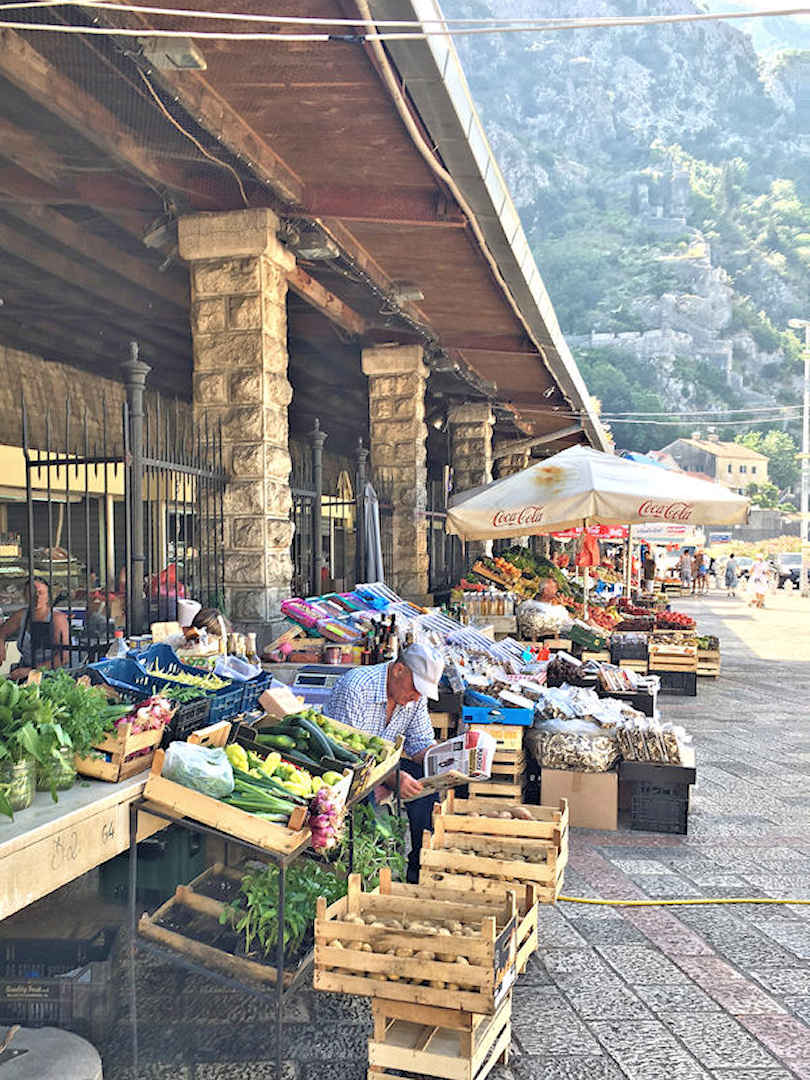
Kotor's Farmers Market just outside the Old Town is open daily
Join an Old Town Walking Tour
Afterwards, join a free walking tour with GuruWalk. During the 1 1/2 hour tour, your local guide will take you through Kotor Old Town, point out essential monuments and beautiful architectural features, tell you about Kotor’s fascinating history, and provide you with (yet more) tips and recommendations for your time in Kotor Bay.
Visit the Maritime Museum and Saint Tryphon’s Cathedral
Unless you’re visiting on a weekend or public holiday (when it closes at 13:00), spend your afternoon roaming around the Maritime Museum [Google Maps location] to learn more about Kotor’s long and fascinating naval history. The entry fee is EUR5.
Finish your afternoon in Kotor Old Town with a visit to Saint Tryphon’s Cathedral [Google Maps location] – open until 18:00 (the entry fee is EUR4).
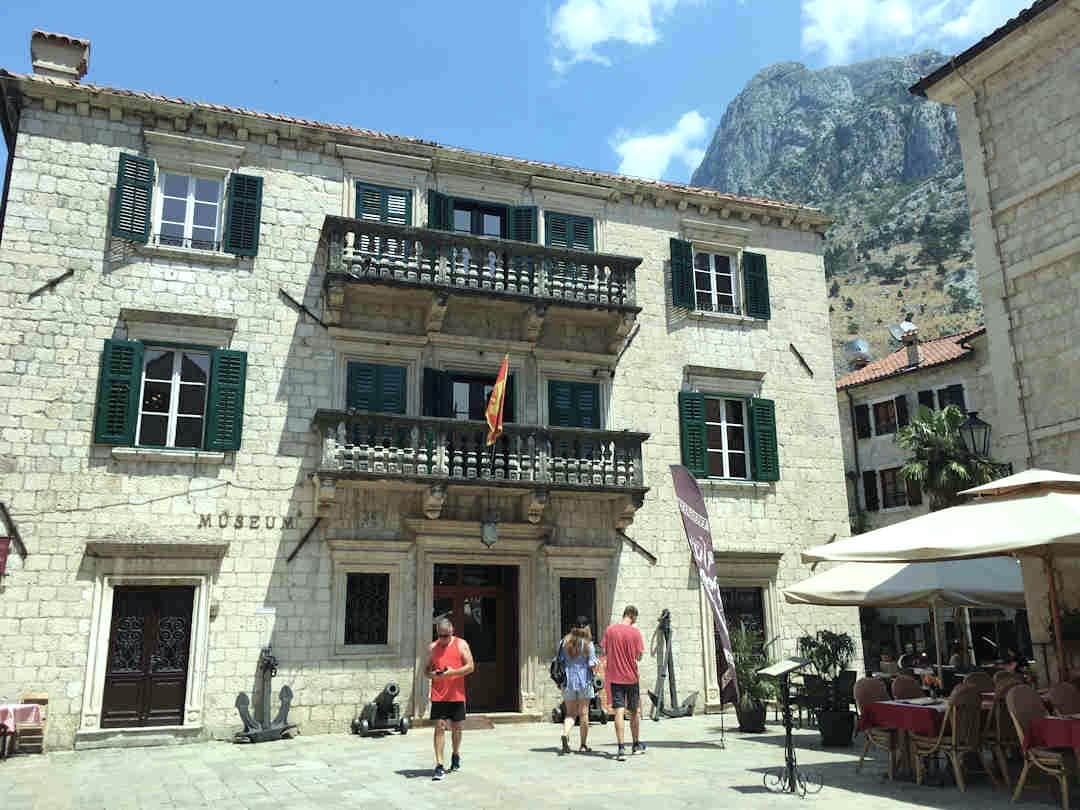
The Maritime Museum in Kotor is well worth a visit
Day 3 – Day trip to Risan and Perast
Today, you’ll continue to immerse yourself in the Bay’s history but travel even further back on a day trip from Kotor. Bring a swimsuit and towel if it’s a warm day; you’ll find out why below.
Your first stop is the Roman Mosaics in Risan [Official website, Google Maps location]. Blue Line buses to Risan leave Kotor from the Farmers Market by the Main Gate into the Old Town (look for the Novo Naselje Škaljari – Risan timetable). You could also try to catch one of the intercity buses heading to Herceg Novi (ask the bus driver to let you off in Risan). It takes about 40 minutes to reach Risan (less if you take the intercity bus), followed by a short walk from the bus stop to the Roman Mosaics.
We recommend purchasing combined tickets, which will save you a few Euros. For EUR12, you’ll gain access to the Roman Mosaics [Google Maps location] and the Perast Museum [Google Maps location], though do note that both are closed on Mondays.
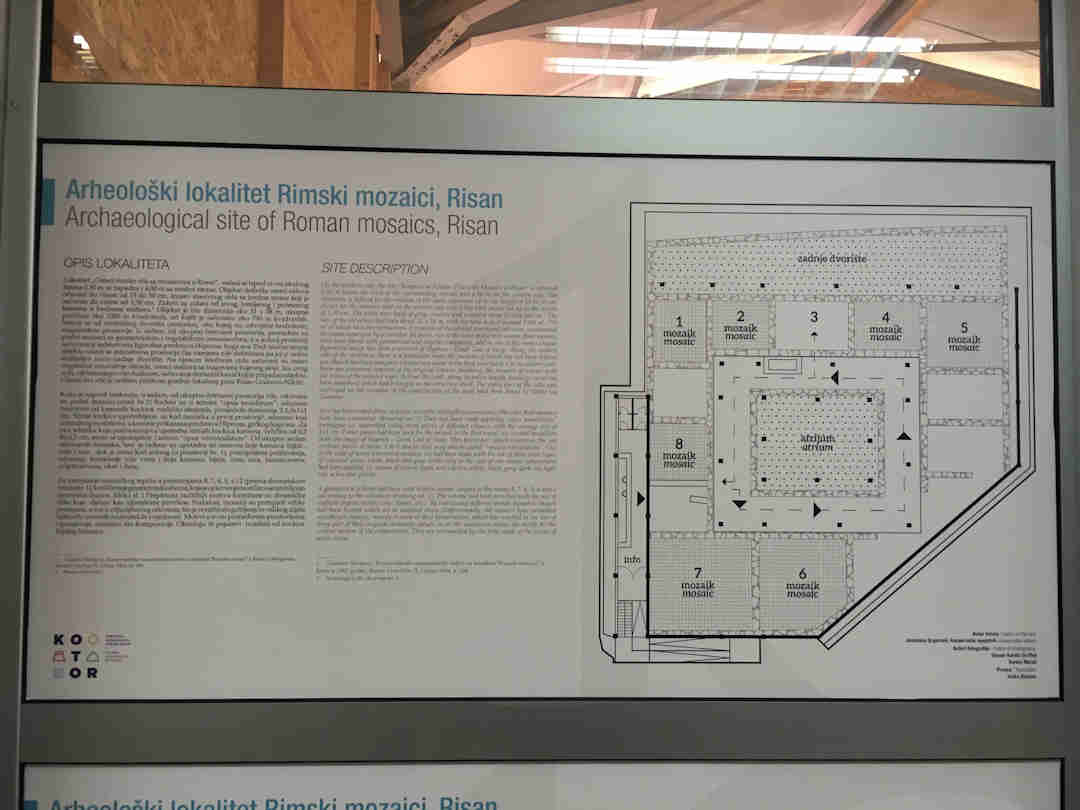
Risan is one of the richest yet least explored archaeological sites in Montenegro
Spend the morning at the Archaeological Site in Risan
Risan is the oldest settlement in the Bay of Kotor and one of Montenegro’s richest yet least explored archaeological sites. The ancient Illyrian city with massive fortifications was first mentioned in the second half of the fourth century BC. It was an important commercial harbour and trading centre located at the intersection of important trade routes. Risan was under Roman occupation for over 500 years – from the second century BC to the fifth century AD.
Archaeological excavations in Risan haven’t taken place since the 1870s. In the 1930s, five large rooms of an extensive structure were uncovered, four of which had preserved mosaic floors. The archaeologists called it the Villa of Hypnos, after the most colourful mosaic depicting Hypnos, the God of Sleep. Over the years, 14 rooms have been uncovered (7 of which have mosaics), all arranged around a central courtyard. Studies have determined that the structure, an ancient Roman guesthouse, was built in the 2nd century AD.
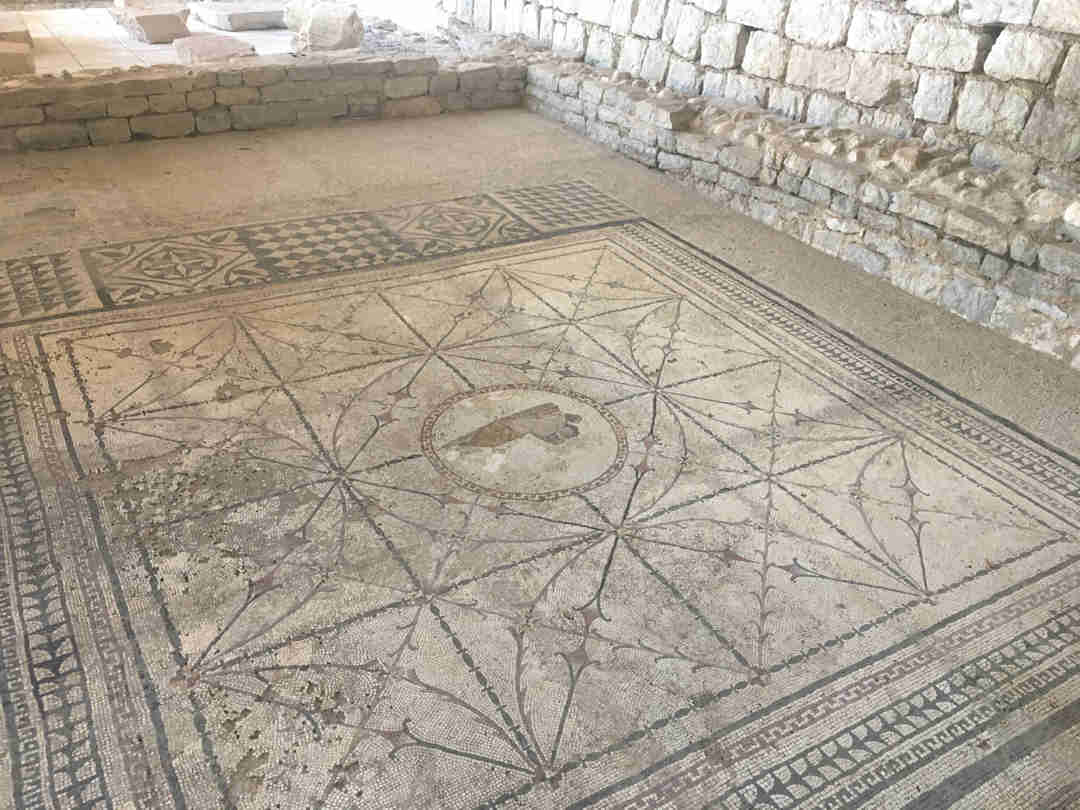
The Villa of Hypnos was named after the mosaic in one of its rooms depicting Hypnos, the God of Sleep
A small museum forms part of the Roman villa complex, with bilingual information boards explaining the excavations and findings in the ancient city of Risan. Among them are significant discoveries, such as the only known Hellenistic bathroom outside of Greece and the largest Hellenistic coin hoard ever discovered (a whopping 12 kilograms), depicting a previously unknown king who appears to have lived in the third century BC.
A roof structure protects the mosaics from the elements. While the museum provides a leaflet in multiple languages, attend the short guided tour included in your entry ticket and take the time to read the information boards along the wall. The site is on the route of organised bus tours, but the tours only stop for about 10 minutes with a quick walk around the mosaics—nowhere near enough to appreciate the site’s historical importance.
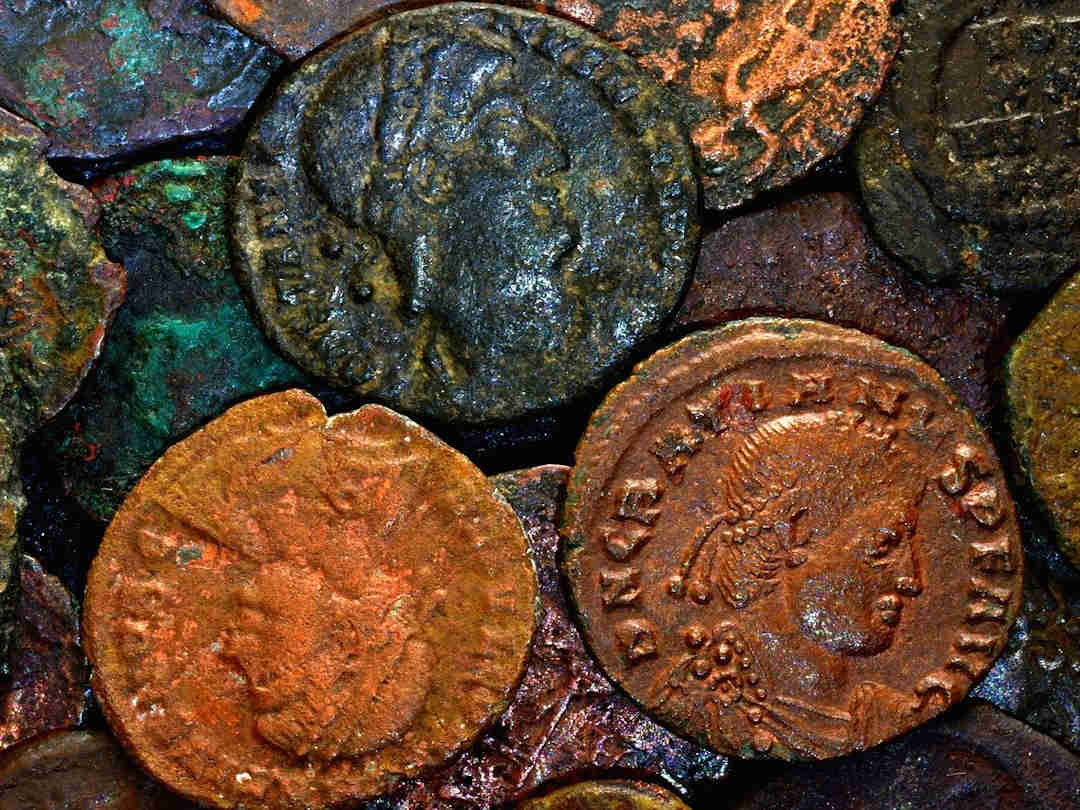
In Risan, archaeologists discovered the largest Hellenistic coin hoard ever discovered | Image by Thanasis Papazacharias on Pixabay
Blue Line buses from Risan back towards Kotor leave Risan on the opposite side of where you get off the bus. Don’t travel back, though – get off in Perast instead (about halfway between Risan and Kotor). The bus stops along the road above Perast three times:
- just after the turn-off into town [Google Maps location],
- above the middle of town [Google Maps location], and
- just after the road through town re-joins the main road [Google Maps location].
We recommend to get off at the third stop and then walk back through town to the first stop.
Spend your afternoon in Perast
The small town of Perast, a former boat-building centre, has a different feel from Kotor: it’s laid-back but sophisticated. Many visitors head straight to Our Lady of the Rocks [Atlas Obscura, Google Maps location], a small church on a man-made island just offshore in the Bay of Kotor. Sadly, that’s also often all they get to see.
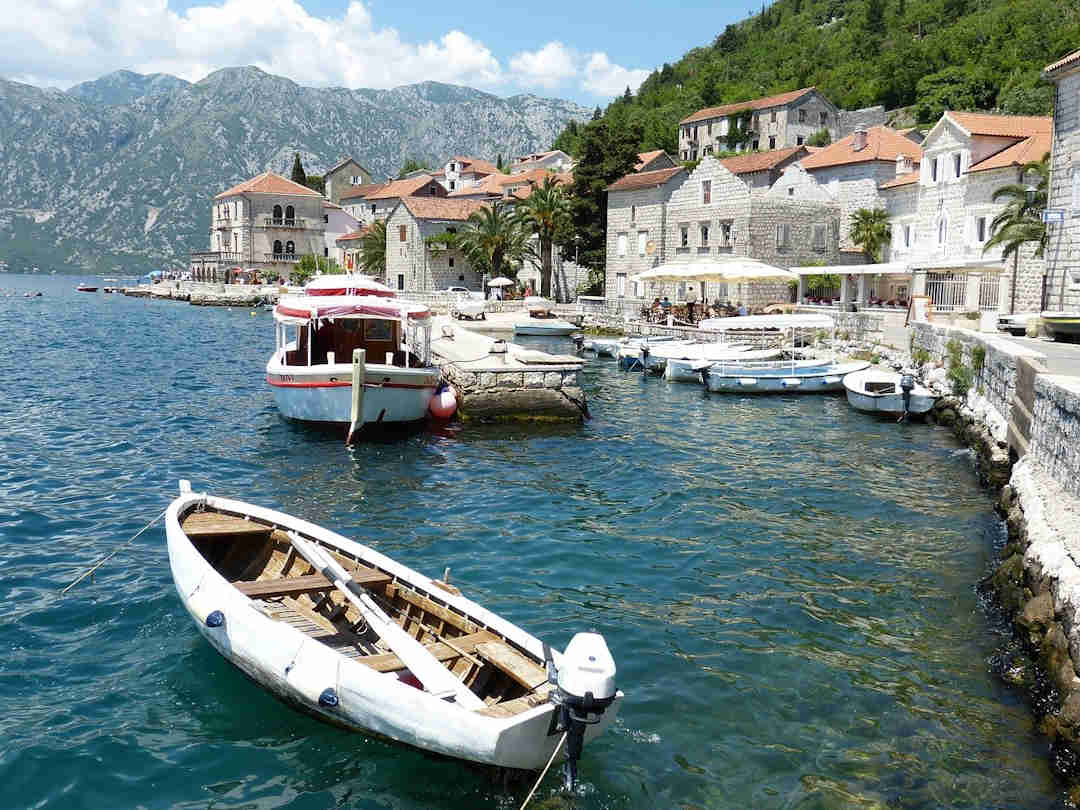
Take your time exploring Perast - there is heaps more to see than just Our Lady of the Rocks | Image by Falco on Pixabay
Instead, we invite you to take your time and explore this quaint place: Enjoy lunch at one of the cafes along the waterfront. Explore its back streets and climb the Bell Tower of the Church of St Nikola [Google Maps location] for gorgeous views over the bay (the entrance fee is only EUR1, but watch your steps as there are a few holes in the floor). Then head to the Perast City Museum [Google Maps location].
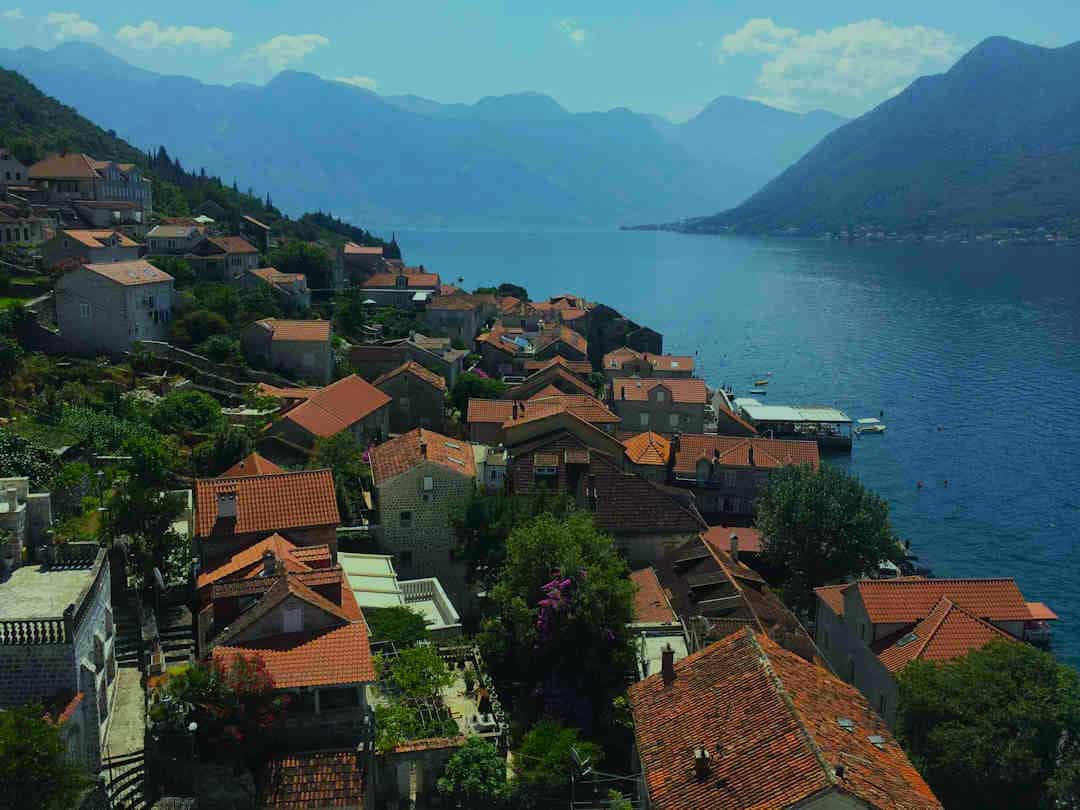
Climb up the Bell Tower of St Nikola's Church for panoramic views over Kotor Bay (but watch your steps)
The museum is housed in a 17th-century palace, one of many you’ll come across when walking around Perast (though some are still in ruins after the devastating destruction of the 1979 earthquake). Belonging to the Bujovic family, a wealthy local family, the palace once stood right by the bay shore (the road in front of it was built later).
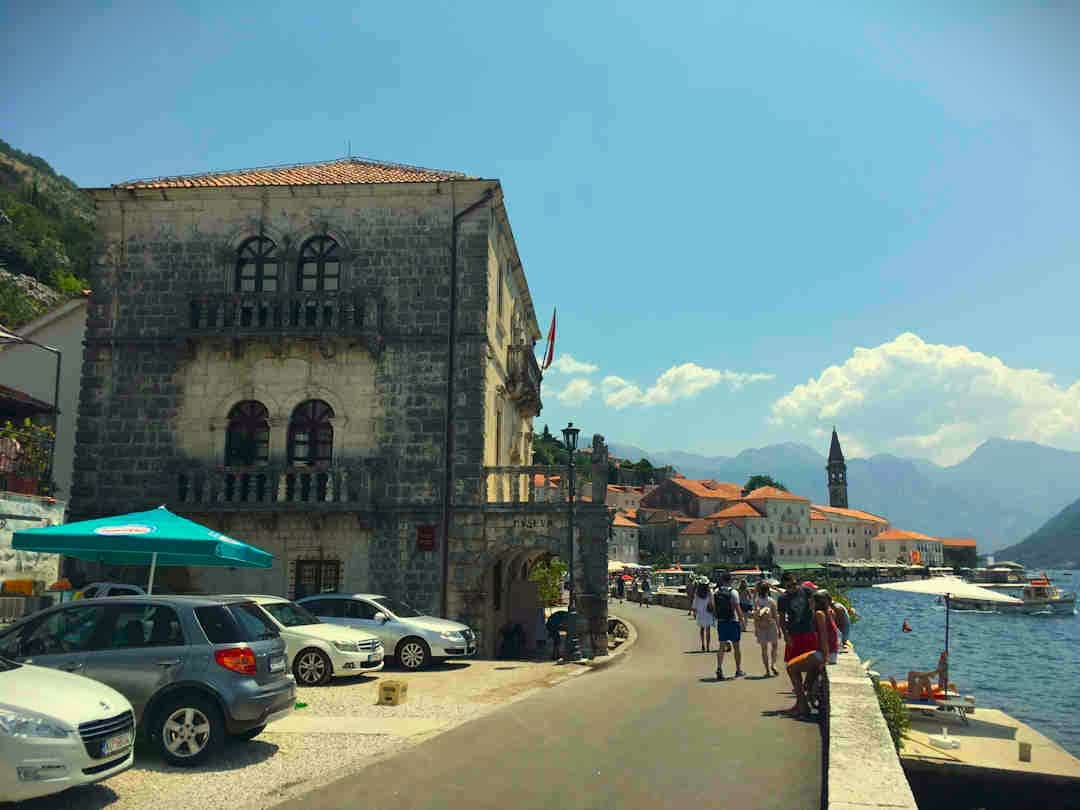
A remnant of Perast's golden age, the Palace of the Bujovic Family today houses the Perast City Museum
The museum’s exhibitions comprise the collections of several noble families from Perast who were involved in maritime trade, the navy and shipbuilding, public archives and library collections. Museum artefacts tell the history of Perast from the 15th century to the beginning of the 20th century. Most exhibits showcase Perast’s golden era when the town enjoyed relative autonomy under Venetian rule (1420-1797) and experienced its most significant economic, social and cultural development.
Strategically positioned opposite the entrance to Kotor Bay, Perast was an essential checkpoint for defence and trading purposes. The shipbuilding skills of Perast’s inhabitants were mentioned in documents as early as the 14th century. Perast’s yards built ships from 6 tons at the beginning of the 16th century to 480 tons at the end of the 18th century. And in 1698, the first maritime school of the Balkans was established in Perast, famous students including the sons of the Russian Emperor.
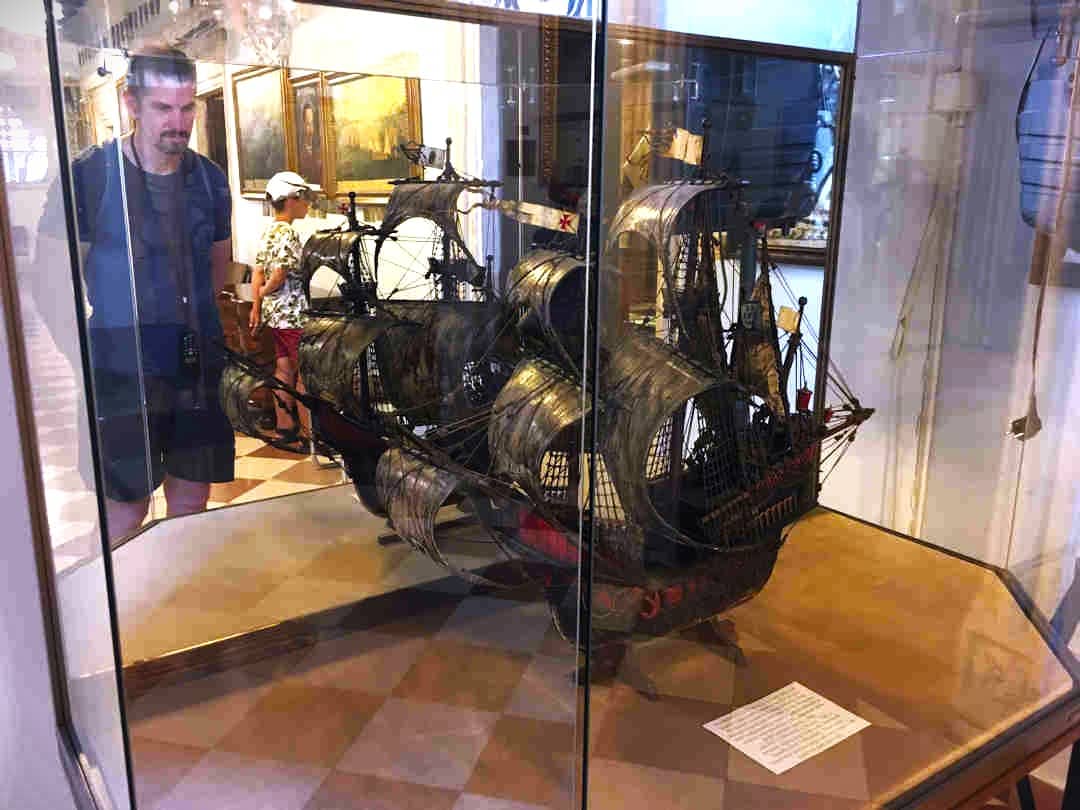
Like Kotor's Maritime Museum, the naval collection in Perast showcases ship models, charts and navigational instruments
Under the subsequent reigns of the Russian, French and Austro-Hungarian Empires in the 19th and into the early 20th century, Perast sadly lost its importance. Thankfully, the local council in 1937 decided to establish the Perast City Museum to preserve what was left of the glorious days:
- The naval collection on the ground floor showcases ship models, navigational instruments and charts;
- On the first floor, you can find portraits and paintings belonging to Perast’s noble families; and
- Decorative objects, weaponry and clothing are shown in the ethnographic exhibition on the second floor.
There are excellent free guided tours (just ask when you pay your entry fee). You can also purchase a guidebook providing detailed information on the different exhibitions and history behind many of the artefacts. The guidebook is available in multiple languages.
Make sure you check out the magnificent views over Kotor Bay from the sea-facing terrace on the first floor.
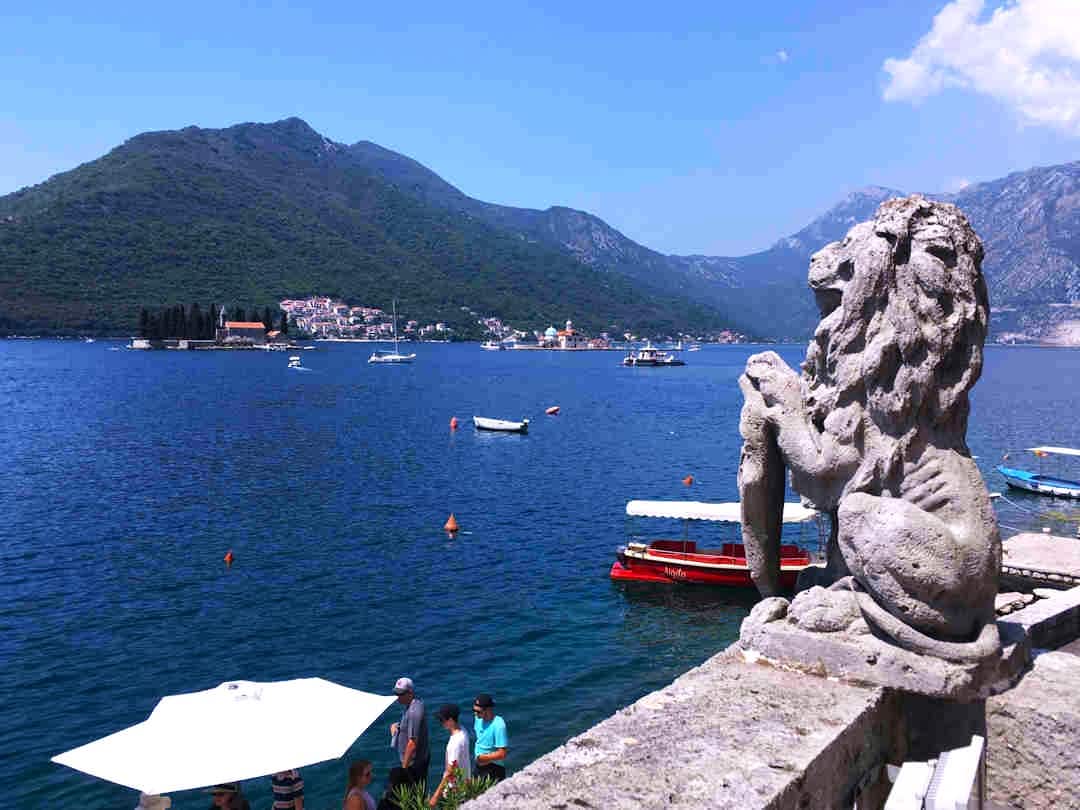
The Perast Museum offers informative free tours and magnificent views from its main terrace
Remembered to pack your swimsuit? If it’s a warm and sunny day, cool off with a refreshing bath at Peskovita Plaža Perast [Google Maps location], near the first bus stop as you enter the town from Risan. Then, hop on the bus back to Kotor.
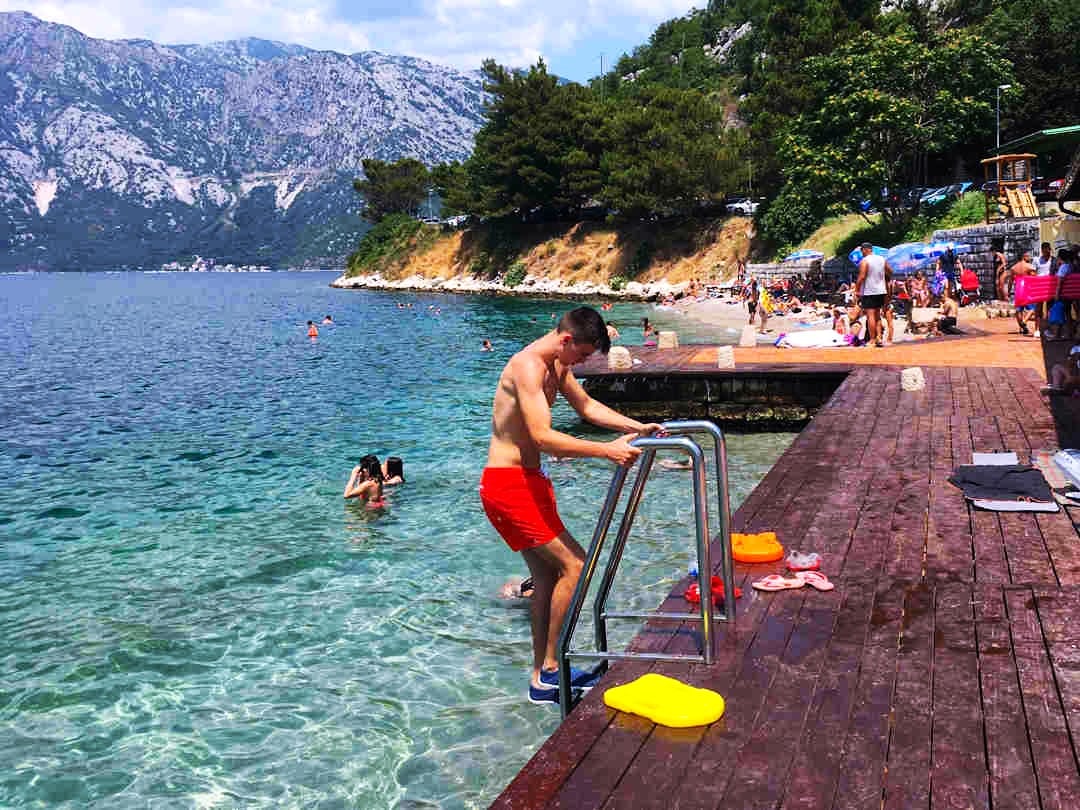
Cool off on a hot afternoon at Peskovita Plaža Perast
What else to do in the Bay of Kotor (if you have a few more days)
You can easily spend more time in and around Kotor.
Water = Ships = Seafarers
If Kotor Bay’s rich naval heritage floats your boat (pun intended), we’ve got a few more options for you.
Check out the Naval Heritage Collection Museum in Tivat
Have you always wanted to see the inside of a submarine? Well, the Naval Heritage Collection Museum in Tivat [Google Maps location] allows you to do just that (and has heaps of information about Kotor Bay’s more recent naval history).
Combine a visit with a bus ride along the bay shore (look for the Kamp—Tivat via/preko Prčanj timetable) and through the small villages, like Donja Lastva, along the way. Sit on the right-hand side for the best views on your way to Tivat (on the left if travelling from Tivat).

At the Naval Heritage Collection Museum in Tivat, you can experience what it's like inside a submarine
Experience the traditions of the Bokeljska Mornarica
If you time your visit right, you may also be able to experience the traditional festivities – including the Kolo Dance – of the Bokeljska Mornarica, the traditional Bay of Kotor Navy, one of the oldest seafaring fraternities in the Adriatic. Key festivities happen on
- 27 January – the festivities of St. Tryphon, the Patron Saint of Kotor;
- 26 June – when the Navy is given the keys to Kotor and symbolic control of the town for three days (a tradition since 1420); and
- 21 November – the Day of the Municipality of Kotor.
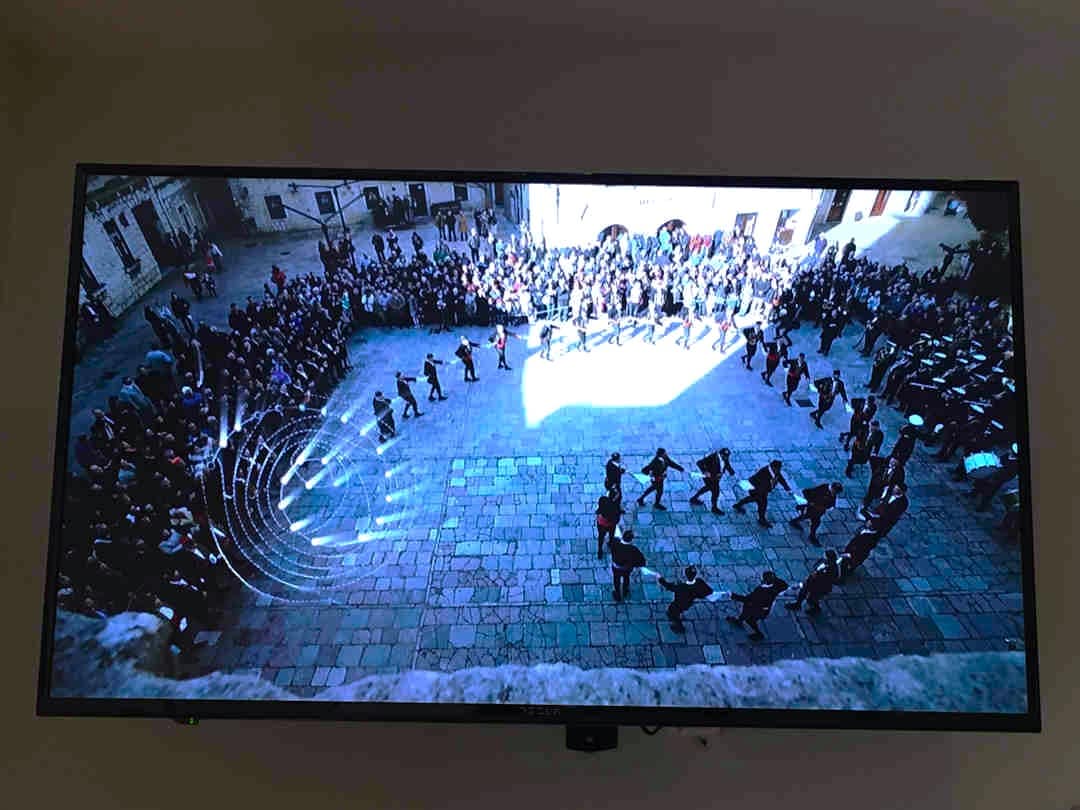
Witness the Kolo Dance of the Bay of Kotor Navy, one of the oldest seafaring fraternities in the Adriatic
Join a Boat or Kayak Tour
If you’re somewhat on (or in) Adriatic waters than learning about its history (or you like both), half-day boat trips allow you to see the Bay of Kotor from a very different perspective. These tours usually include
- a stop at Our Lady of the Rocks in Perast,
- a stop at the old submarine tunnels of the Yugoslav Navy [Google Maps location], and
- a visit to the Blue Cave, outside Kotor Bay on the Luštica Peninsula [Google Maps location].
Alternatively, consider a Kayak Tour of the Bay of Kotor. For almost three hours, you get to kayak, snorkel, sunbathe and check out the medieval villages along the bay.
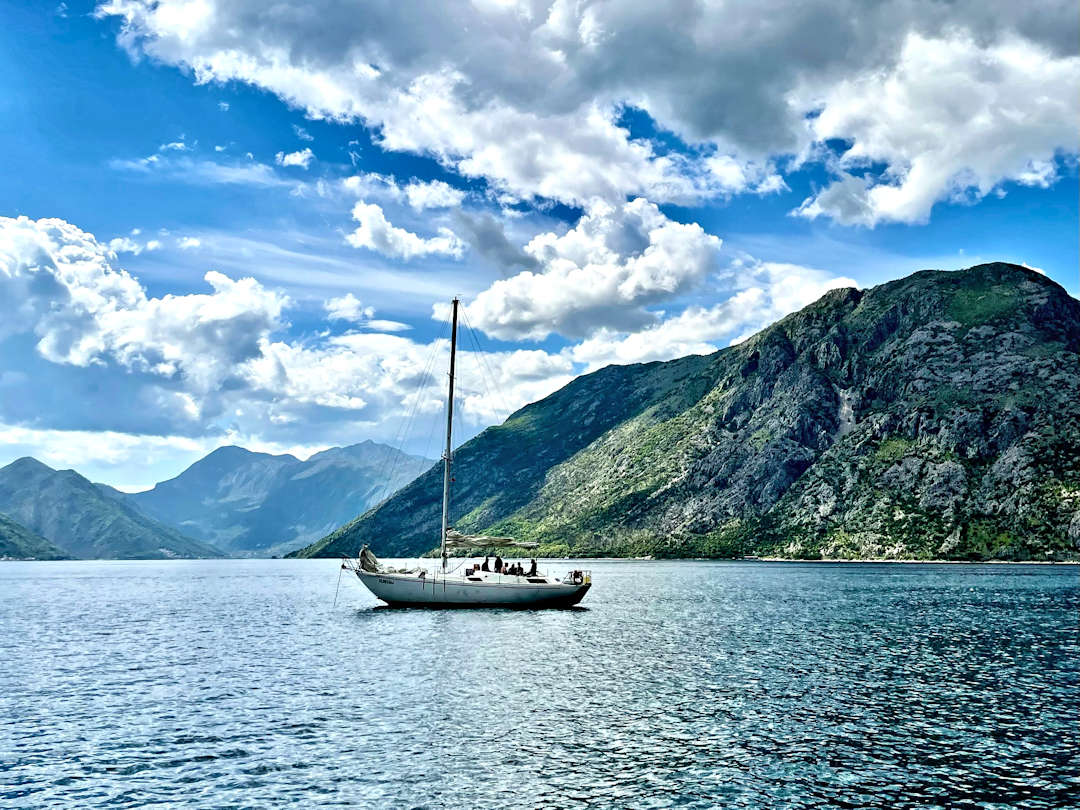
Join a boat or kayak tour to experience Kotor Bay from the water | Image courtesy of Daniil Korbut on Unsplash
Alternative hikes with fantastic views over Kotor Bay
Did you love the Ladder of Kotor? Great. So did we. Hiking in Kotor Bay is the perfect way to get away from the crowds and fully appreciate the natural beauty of this country. So, if hiking is your thing, we can recommend three other (out and back) hikes.
The first two take you to the ruins of fortresses built in the 19th century during Austro-Hungarian times; the third past an abandoned village to a solitary but very picturesque 14th-century church on a mountaintop:
- The hike to Fort Vrmac [Google Maps location, GPX file] is 5.3 kilometres one-way from Kotor Bus Station with a 480m elevation gain.
- The hike to Fortress Gorazda [Google Maps location] is a little longer but less steep, with 430m elevation gain over 7.5 kilometres one-way, also from Kotor’s Main Bus Station.
- The hike from Dolnji Stoliv to Gornji Stoliv and Svetog Vida [Google Maps location] is 5km one way, with an elevation gain of around 430m. To get to the trail head, take the Blue Line bus towards Tivat (look for the Kamp – Tivat via/preko Prčanj timetable) and get off in Dolnji Stoliv.
No matter which hike you choose, each offers different views of both sides of Kotor Bay and the Adriatic in the distance. As with the Ladder of Kotor/San Giovanni’s Fortress, start your hike/s early to avoid the full force of the sun.
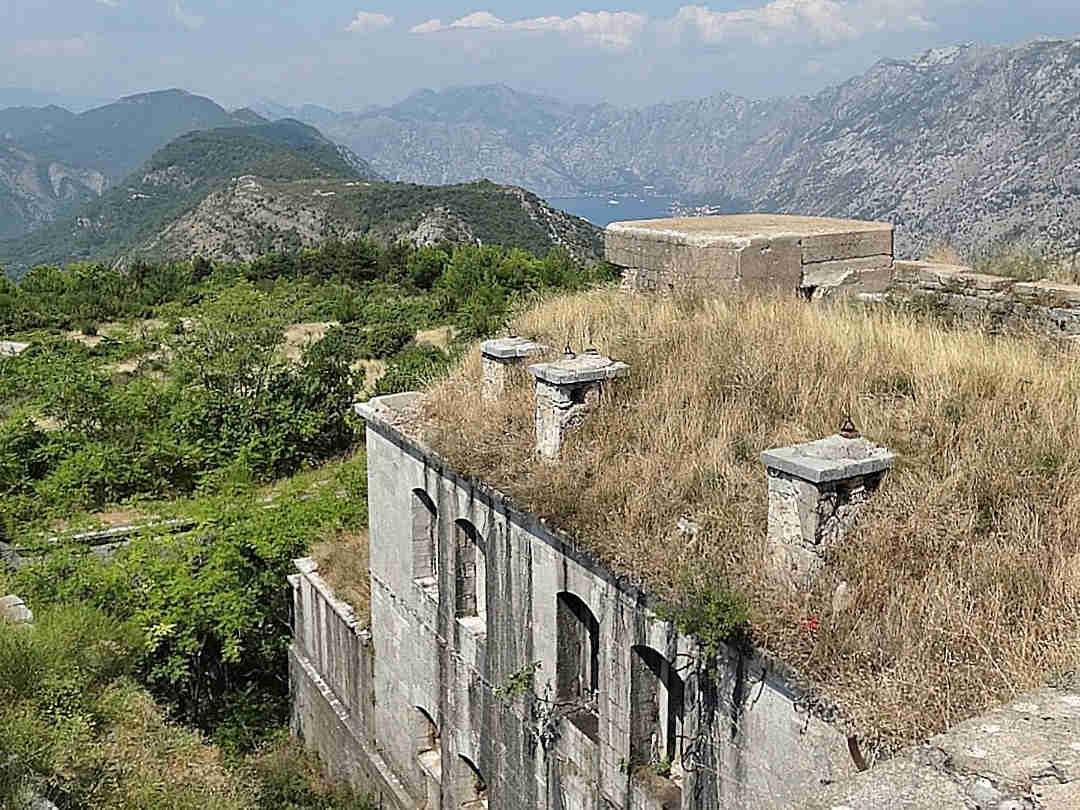
Hikes to Vrmac and Gorazda Fortresses offer different views of both sides of Kotor Bay
Bike tours around and above the bay
The loop around Kotor Bay (best done anti-clockwise) is 43km long (with a ferry crossing between Kamenari and Lepetane). Bikes can be hired at Kotor Bay Tours [Google Maps location], which also rents kayaks, or other bike rental companies in Kotor and Dobrota. If that’s too far for you, you could hire a scooter instead – check out Freedom Rent or Scootn’Go.
If the road around the bay is too narrow for your liking (and the traffic), join a Bike Tour of the Kotor Serpentines. Yes, the road is narrow, but at least you’ve got safety in numbers (and even more stunning views along the way).
Day trips we recommend (and some we don’t)
There are also tour operators who offer rafting trips on the Tara River. If you have more time in the country, don’t book them. Instead, visit Durmitor National Park [Google Maps locations] and take a tour from there. Getting to the rafting areas from Kotor takes 3+ hours (one way), so you spend more time travelling there and back than enjoying the rafting experience. Not to mention the carbon emissions your day tour causes.
A much better use of your time (from Kotor) is a (day) trip to Cetinje (Montenegro’s Old Capital) and Lovćen National Park. If you plan to hire a car for the day, check out the serpentine road (with gorgeous views over Kotor Bay).
How to find the best deals on rental cars
Most of the time, we use public transport to get us around. But occasionally, hiring a car or scooter just makes it easier or gets us to places we couldn't go without a set of wheels. Whenever we do hire a vehicle, our first point of call are local rental providers. A quick Google Maps search shows who's near us. We then check the reviews and only contact those other travellers had good experiences with.
If we can't find anyone we're comfortable with, we search for deals on aggregator websites. We've used Rentalcars.com and DiscoverCars.com in the past and had only good experiences with them. Both partner with trusted brands like Hertz, Avis, Budget or Europcar (and in some locations even local providers) - so you can compare car hire options in a similar way you'd compare accommodation offers across Agoda and Booking.com.
Where to stay in Kotor (and nearby)
Kotor’s position towards one end of the bay means hundreds of accommodation options are dotted along the bay, with an easy bus connection into Kotor from the villages along the bay shore.
| Name | Property Features | Type | Price Indicator | Book Now |
|---|---|---|---|---|
| Apartments Kaleta | City views, family friendly, kitchen facilities | Apartment | $$ | Book Now |
| Kotor Center W | Beachfront Allergy-free units | Apartment | $$$ | Book Now |
| La Rocca Apartment | Certain documented environmental practices implemented at property Historic building Inside the Old Town | One-bedroom Apartment | $$ | Book Now |
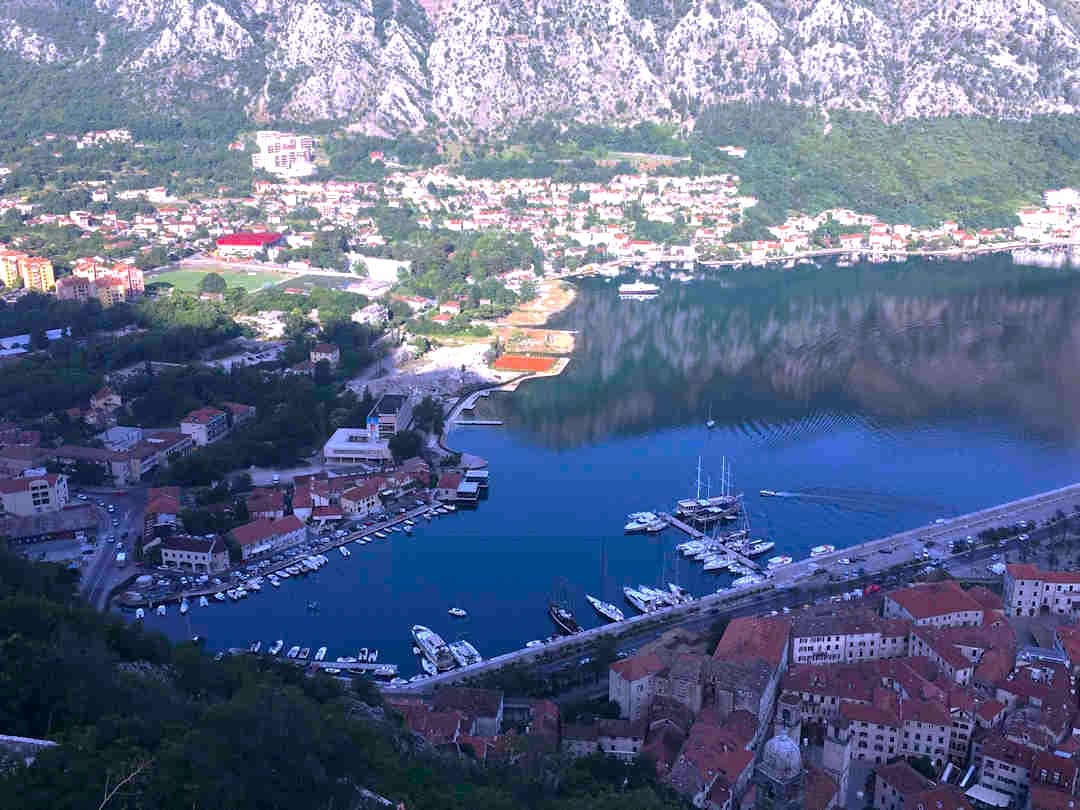
If the Old Town of Kotor is too expensive (or too crowded), don't worry: there are plenty of accommodation options along the shore (and in easy reach by bus)
Where to eat in and around Kotor
Kotor is full of tourist(y) restaurants, but if you leave the old town, you can find a few gems serving local food at local prices, including
- BBQ Tanjga [Google Maps location] is a great steakhouse serving barbecue (as the name suggests) and European dishes. Open for lunch and dinner. Serves food to go or you can sit and eat indoors or outside. There is always a crowd.
- Caffe Bar Lukisi in Prčanj [Google Maps location] is known for its great coffee. The prices are reasonable, and the service is efficient. The atmosphere is cosy, with great views.
- Restoran Mademoiselle [also in Prčanj – Google Maps location] serves lunch, dinner and a good selection of wines.
- Tiha Noć Restaurant in Dobrota [Google Maps location] is a Turkish restaurant with great views. It serves Breakfast, Lunch, Dinner, Brunch, and Drinks. It has outdoor seating, vegetarian dishes, and occasional live music.
- Restaurant Mondo, another friendly waterfront eatery in Dobrota, serves delicious seafood dishes.
Want to see more of Montenegro? Check out our Montenegro guide and 14-day itinerary. And if you’re wondering how much this 2-week adventure might cost you, head to our Travel Budget Montenegro Guide.
Have you explored the Bay of Kotor (recently)?
What other tips would you add to experience Kotor off the beaten path? And if you haven’t been, what other questions do you have?
Before you go, if you liked our article and found it helpful, we would appreciate it if you could share it with your friends and family via the Share buttons below. Even better: Leave a short review on Trustpilot or Google, which would help us further build our online reputation as a (trustworthy and helpful) travel and lifestyle blog.


